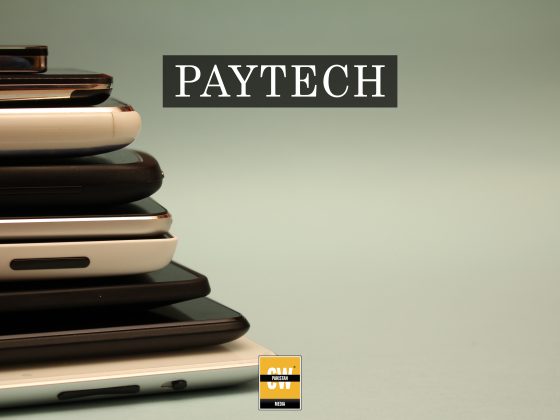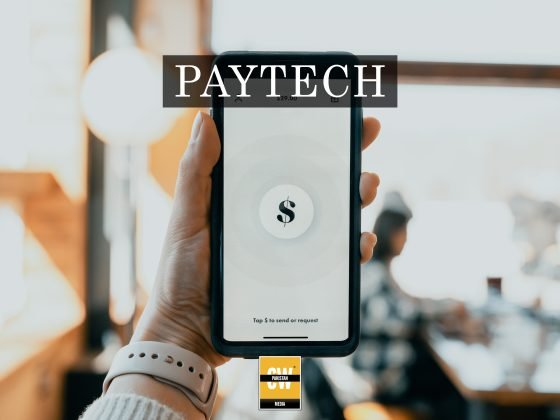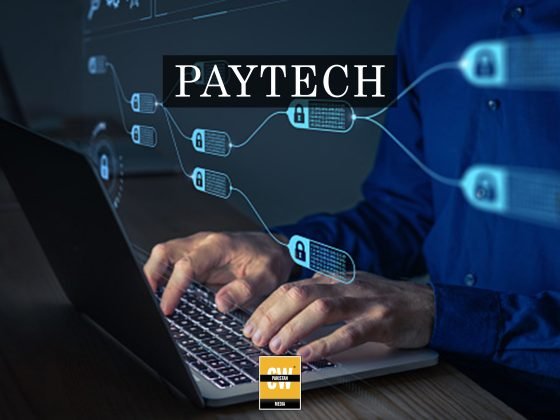If you keep an eye on global technology trends and mergers and acquisitions, you may have heard that Square, the payments behemoth controlled by Twitter creator Jack Dorsey, has purchased AfterPay, an Australia-based ‘buy now, pay later’ (BNPL) startup, for an eye-popping $29 billion. Tabby, a Dubai-based competitor in the same business, launched a $50 million Series B at a $300 million value just a few days later.
In the BNPL area, which has been heating up all over the world for the better part of this year, this was merely a stretch of seven days. Scalapay, based in Milan, received $48 million to grow throughout Europe, while Klarna, the continent’s and perhaps the world’s largest player, soared to a $46 billion value following a $639 million round headed by Softbank’s Vision Fund, the Japanese telecom’s venture arm. Then there’s Affirm, the market leader in the United States, with $1.5 billion in the bank, and a slew of other companies raising tens of millions of dollars.
But what’s the point of tossing out stats that have nothing to do with Pakistan? That’s because, in response to the excitement and scale seen abroad, local firms have begun to develop their own BNPL solutions. This includes Islamabad’s QisstPay and Lahore’s KalPay, although Finpro and KistPay market themselves as smartphone financing alternatives, albeit in essence, they’re virtually the same thing.
‘The recent budget mandates that merchants begin taking card payments, which opens up the market for BNPL, but it will take at least five years to expand as digital payments become more widespread.’
Even if the term BNPL is self-explanatory, allow me to state the obvious. The service essentially lets customers purchase items from vendors while deferring payment. The following inquiry is likely to be: cool, but what’s new here? After all, isn’t that what credit cards are for? Or, for that matter, simple monthly instalments? In terms of the principle of deferring payment for present consumption into the future, they’re very much the same thing. However, depending on the company strategy, there may be changes.
Credit cards function on the basis of an interest rate model in which the financial institution allows the consumer to pay for a specific item at any location that takes cards and pay within a specified time limit to avoid costs. However, after you’ve breached that grace period, markup begins to accumulate, and that’s how banks make money through this channel.
BNPL companies, on the other hand, onboard individual merchants, allowing them to offer their customers the option to extend the payments over a specific period. The most common model is Pay in 4, which essentially spreads out the amount into four equal instalments. Usually, if the buyer is late in repaying, they are charged an interest rate. That’s just the consumer side. These startups also promise to help businesses increase their average order value (AOV) and get them more sales.
There are no hard and fast rules in a growing space, and the models are changing. According to its creator CEO Jordan Olivas, an American citizen who previously worked at Klarna and then another BNPL, ChargeAfter, QisstPay pays in four months but is completely free to the end client — not even late payments — and allows purchase amounts ranging from Rs1,500 to 50,000.
The merchant receives the entire payment up front, whereas the BNPL player is responsible for the entire credit risk, which they can try to mitigate by utilising their customer demographic algorithm, which may need CNIC or other forms of identification depending on the fintech.
In the meanwhile, KalPay offers two payment options: pay in full within 14 days after purchase or pay in four equal weekly instalments. Late payment costs do exist, according to their website, “but that too after giving you constant reminders and a cushion period,”
“We make our money on the merchant side where our platform not only brings in higher-value sales for them but also increases conversion and creates a recurring user base. For the customer, it’s more of a cash flow management system. There is absolutely no markup involved, so it’s fully Shariah-compliant as well,” Mr Olivas says.
While e-commerce remains the most common BNPL channel worldwide — where the buyer simply picks their preferred option at the checkout — point-of-sale financing is gaining popularity. With over 100 merchants currently on board for the former and in-store integrations expected to arrive in the coming weeks, QisstPay wants to provide both.
That leads us to the question of how big of a market these companies are targeting. According to the State Bank of Pakistan’s Annual State of the Economy report, digital e-commerce transaction value was Rs93.8 billion, accounting for 40% of all transactions, with credit or debit cards accounting for Rs 73.7 billion. Even while the latter is increasing at a strong compounded annual growth rate of over 37 percent, it is still too tiny to be a viable and long-term firm.
Adding the Rs364 billion in point-of-sale transactions in the previous fiscal year theoretically increases the potential size, but this isn’t a channel that has grown significantly in recent years, and the technological complexity of terminals appears to have remained constant. “The recent budget mandates that stores begin taking card payments, which opens up the market for BNPL,” says QisstPay’s creator. “However, as digital payments expand, it will take a good five or six years to develop.” Until then, the area will be a venture play, which gives Mr Olivas confidence because his investors include executives and founders of top BNPLs.
This entire sector has a deeper philosophical component to it, as it is essentially founded on the notion of boosting consumption in a country where the economic situation is far from assured. Is it really the race we should be engaging into if we encourage people to spend over their means in such an environment? Perhaps not, in my opinion, but it is unlikely to dissuade investors from taking this risk.
When it comes to fintech investments, Pakistan used to be one of the most neglected nations, but it is now one of the most promising. More than $305 million has flowed into the world’s fifth-most populated nation’s startups this year, more than in the previous six years combined. Similarly, since the beginning of the year, the ‘Buy Now, Pay Later’ (BNPL) model has been gaining traction across the world. Following the worldwide buzz and size, local entrepreneurs have begun to develop their own BNPL solutions. QisstPay from Islamabad and KalPay from Lahore are among them, while Finpro and KistPay advertise themselves as smartphone financing options.
QisstPay has acquired $15 million in seed funding in preparation for its expansion into Sri Lanka and Bangladesh. Global Founders Capital, Fox Ventures, and First Check Ventures also participated in the round, which was headed by MSA Capital. Within six months, the Islamabad-based firm hopes to expand into other South Asian regions. The startup intends to have 1,000 merchants and a million consumers using its service by next month, including local affiliates of Samsung Electronics Co. and Xiaomi Corp. It also plans to have 1,000 merchants and a million customers using its service by next year. The creators of Scalapay, Simone Mancini and Johnny Mitrevski, as well as Pakistan’s third-largest lender, United Bank Ltd, are among QisstPay’s investors.
The “credit card” and BNPL models are slightly different. Credit cards operate on an interest rate basis, with the client paying for a specific item at any location that takes cards and paying within a set time limit to avoid costs. However, once the grace period has expired, markup begins to accumulate, and this is how financial institutions earn their profits. Individual merchants are boarded by BNPL firms, allowing them to give their consumers the option of deferring payments for a set length of time. The most prevalent payment method is Pay in 4, which divides the total into four equal payments. QisstPay does pay in four (months), but it is completely free to the final client — even late payments — and accepts orders ranging from Rs1,500 to Rs50,000. The merchant receives the entire payment up front, whereas the BNPL participant is responsible for the entire credit risk, which they can try to mitigate by utilising their customer demographic algorithm, which may need CNIC or other forms of verification depending on the fintech.
BNPL players generate money by bringing in higher-value transactions for merchants, as well as increasing conversion and creating a recurrent user base. It’s more of a cash flow management solution for the consumer. Because there is no markup involved, it is Shariah-compliant as well. While e-commerce remains the most popular channel for BNPL internationally — where the buyer simply selects their favourite choice at the checkout — point-of-sale financing is becoming more popular. QisstPay intends to offer both, with more than 100 merchants already on board for the former and in-store integrations set to launch in the coming weeks.
According to the State Bank of Pakistan’s Annual State of the Economy report, the total value of digital e-commerce transactions in Pakistan was Rs93.8 billion, accounting for 40% of all transactions, with Rs73.7 billion coming via credit or debit cards. Even while the latter is expanding at a strong compounded annual growth rate of over 37%, it is still too tiny to be a viable and long-term firm.
The recent budget mandates that merchants begin taking card payments, which expands the market for BNPL, but it will take another five years or more until digital payments gain traction. There’s also another aspect to this entire sector, which is essentially founded on the notion of increasing consumption in a country where the current economic situation is far from assured. It is not advisable to encourage consumers to spend above their means in such an atmosphere at this time, but investors have faith in this concept and are willing to travel into this uncharted territory.








